

Robotics and Autonomous Systems. The Robotics and Autonomous Systems Special Interest Group was established on 1 January 2013 in a partnership between the Technology Strategy Board (TSB) and the Knowledge Transfer Networks.

Drawing on a core group of experts, leading industrialists and academics, the SIG's aim is to stimulate collaboration and innovation in RAS capabilities, which are required to underpin multiple industrial sectors, leading to increased productivity and growth. The SIG runs until the end of 2015, when a review of its work will be undertaken to inform future support and intervention. Is the Law Ready for Autonomous Cars? World's Largest Professional Network. The dangers of IoT and how to mitigate the risks. The Internet of Things (IoT) is not a future opportunity and risk, it’s already here.
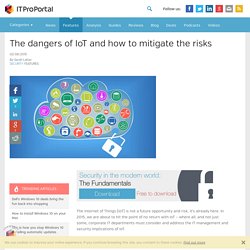
In 2015, we are about to hit the point of no return with IoT – where all, and not just some, corporate IT departments must consider and address the IT management and security implications of IoT. Self-Driving Cars Get a Code of Ethics. A philosopher is perhaps the last person you’d expect to have a hand in designing your next car, but that’s exactly what one expert on self-driving vehicles has in mind.
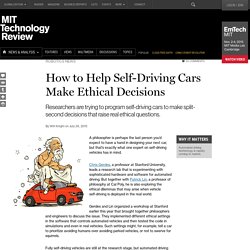
Chris Gerdes, a professor at Stanford University, leads a research lab that is experimenting with sophisticated hardware and software for automated driving. But together with Patrick Lin, a professor of philosophy at Cal Poly, he is also exploring the ethical dilemmas that may arise when vehicle self-driving is deployed in the real world. Gerdes and Lin organized a workshop at Stanford earlier this year that brought together philosophers and engineers to discuss the issue. They implemented different ethical settings in the software that controls automated vehicles and then tested the code in simulations and even in real vehicles.
Twelve Tomorrows. Lauren Beukes "Slipping" Lauren Beukes lives in Cape Town, South Africa.

She’s the author of The Shining Girls, about a time-traveling serial killer; Zoo City, a phantasmagorical noir set in Johannesburg; and the neo-political thriller Moxyland. She’s also written a best-selling comic, Fairest: The Hidden Kingdom. Her new book is Broken Monsters, set in Detroit. Business Reports. Magna Tests a Single-Camera System for Self-Driving Cars. Most self-driving vehicles, including Google’s various prototypes, are bedazzled with sensors, including cameras, ultrasound, high-accuracy GPS, and expensive laser-ranging instruments known as lidar.
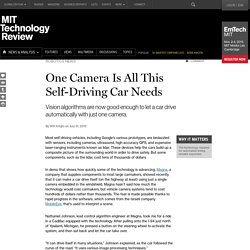
These devices help the cars build up a composite picture of the surrounding world in order to drive safely. But some components, such as the lidar, cost tens of thousands of dollars. Hackers Remotely Kill a Jeep on the Highway—With Me in It. I was driving 70 mph on the edge of downtown St.

Louis when the exploit began to take hold. Piratage de voiture connectée : ça marche aussi à distance. La preuve avec cette Jeep. Créer une personnalité juridique pour les robots intelligents est totalement inutile. Des véhicules autonomes sur route ouverte à Bordeaux en octobre 2015. Bordeaux pourra revendiquer début octobre le titre de capitale française du véhicule autonome.
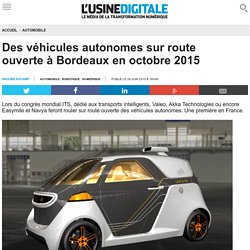
The sharing economy – sizing the revenue opportunity. Introducing the “Sharing S-curve”

Bis-14-1227-unlocking-the-sharing-economy-an-independent-review.pdf. L’entrepreneur, l’avocat et l’économie collaborative. Les questions juridiques et règlementaires sont clés dans les business models de l’économie collaborative.
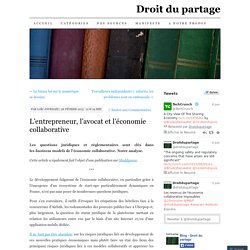
Justice. Le drone : objet juridique volant à identifier. Par Thierry Wickers, Avocat. A la différence de l’aéronef classique, qui comporte un pilote et intègre le système destiné au pilotage, un « drone civil » se caractérise par la dissociation de l’aéronef, du système de guidage et du pilote.

La réglementation applicable, qui prend la forme de deux arrêtés du 11 avril 2012 [1], prend acte de cette situation et précise que : l’aéronef qui circule sans personne à bord est un « aéronef télépiloté » l’aéronef télépiloté et les commandes au sol constituent le « système d’aéronef télépiloté » le pilote est remplacé par le « télépilote »
La mobilité à l'heure de l'économie circulaire - Mobivia Groupe. Adopter l’économie circulaire suppose de passer d’un monde à l’autre : de la surconsommation et du tout jetable à un juste prélèvement de la ressource et au recyclage. Une révolution nécessaire dans laquelle s’impliquent les acteurs de la mobilité. En route vers de bonnes pratiques. Chine: une voiture imprimée en 3D pour 1 600 euros. Après l’impression de bâtiments, la Chine réalise une nouvelle prouesse dans le domaine de l’impression 3D. Sur l’île de Hainan, la société Sanya Sihai a fabriqué un véhicule électrique en un temps record : un mois et demi de conception pour seulement cinq jours d’impression et d’assemblage. Gearing up to save lives, reduce costs, resource consumption.
This graphic shows the future of the auto industry. It may have taken professional auto industry analysts some time to understand the impact of autonomous vehicles. La redoutable stratégie juridique et en affaires publiques d’Uber. Google Says the Internet of Things' Smarts Will Save Energy. As the Internet of Things expands, with everything from thermostats to cameras to cars plugging into the net, so does the need for machines that can handle those connections. The data traveling to and from all those thermostats, cameras, and cars, you see, must flow through the massive data centers operated by the likes of Google, Apple, and Facebook.
The worry is that powering all this extra hardware will require exponentially larger amounts of electricity—not to mention all the money and space spent on the hardware itself. But Urs Hölzle says this won’t be the problem it may seem. Smart Home Devices Will Need Smarter Security. Plenty of science-fiction stories feature ordinary household appliances staging a revolt. In an episode of Futurama, toasters and home robots rise up against their human oppressors. Two trends are now starting to make such scenarios seem less far-fetched. Internet of Things: Opportunities and Challenges. The convergence of connecting people, things, data and processes is transforming our life, business and everything in between. The technical definition of The Internet of Things (IoT) is the network of physical objects accessed through the Internet. These objects contain embedded technology to interact with internal states or the external environment.
In other words, when objects can sense and communicate, it changes how and where decisions are made, and who makes them. The Internet of Things (IoT) is emerging as the third wave in the development of the Internet.